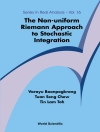The domain of inverse problems has experienced a rapid expansion, driven by the increase in computing power and the progress in numerical modeling. When I started working on this domain years ago, I became somehow fr- tratedtoseethatmyfriendsworkingonmodelingwhereproducingexistence, uniqueness, and stability results for the solution of their equations, but that I was most of the time limited, because of the nonlinearity of the problem, to provethatmyleastsquaresobjectivefunctionwasdi?erentiable….Butwith my experience growing, I became convinced that, after the inverse problem has been properly trimmed, the ?nal least squares problem, the one solved on the computer, should be Quadratically (Q)-wellposed, thatis, both we- posed and optimizable: optimizability ensures that a global minimizer of the least squares function can actually be found using e?cient local optimization algorithms, and wellposedness that this minimizer is stable with respect to perturbation of the data. But the vast majority of inverse problems are nonlinear, and the clas- cal mathematical tools available for their analysis fail to bring answers to these crucial questions: for example, compactness will ensure existence, but provides no uniqueness results, and brings no information on the presence or absenceofparasiticlocalminimaorstationarypoints….
Table of Content
Nonlinear Least Squares.- Nonlinear Inverse Problems: Examples and Difficulties.- Computing Derivatives.- Choosing a Parameterization.- Output Least Squares Identifiability and Quadratically Wellposed NLS Problems.- Regularization of Nonlinear Least Squares Problems.- A generalization of convex sets.- Quasi-Convex Sets.- Strictly Quasi-Convex Sets.- Deflection Conditions for the Strict Quasi-convexity of Sets.
About the author
Background: Ecole Polytechnique (Paris, 1965),
Ecole Nationale Supérieure des Télécommunications (Paris, 1968),
Paris-6 University (Ph. D., 1971).
Professor Chavent joined the Faculty of Paris 9-Dauphine in 1971. He is now an emeritus professor from this university. During the same span of time, he ran a research project at INRIA (Institut National de Recherche en Informatique et en Automatique), focused on industrial inverse problems (oil production and exploration, nuclear reactors, ground water management…).












